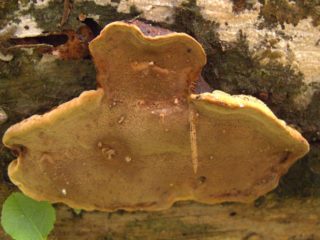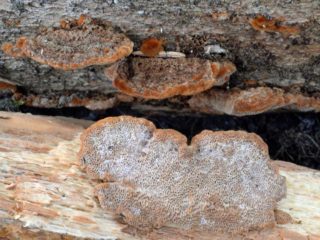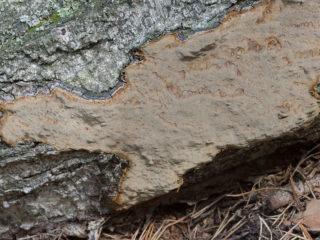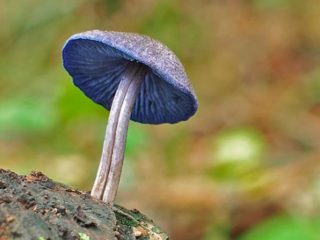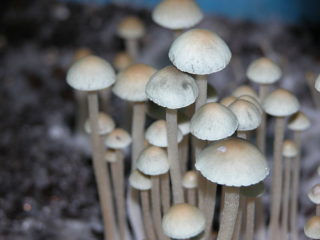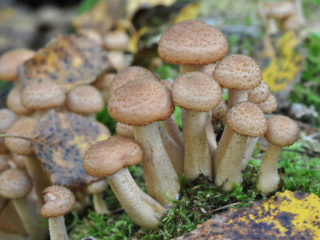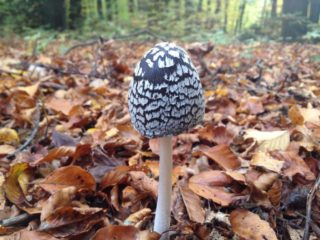Content
Phellinus conchatus (Phellinus conchatus) is a parasitic fungus growing on trees, belonging to the Gimenochetes family and the Tinder genus. It was first described by Christian Person in 1796, and correctly classified by Lucien Kele at the end of the 19th century. Its other scientific names:
- boletus shell-shaped;
- the polyporus is shell-shaped;
- phellinopsis conchata.
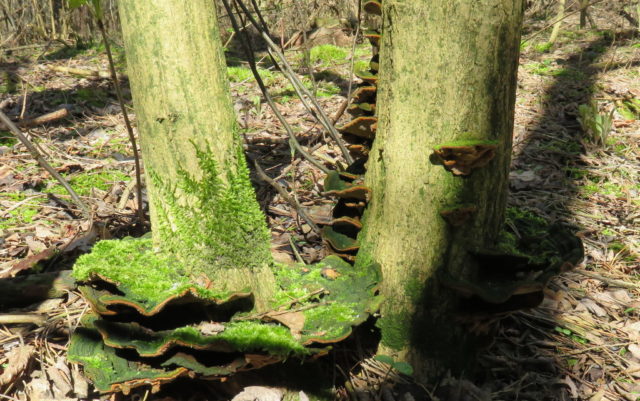
The fungus can settle at the very roots or climb up the trunk
What does the shell-like fellinus look like?
Mushrooms are devoid of legs, with a rigid cap they firmly adhere to the bark with their lateral sides. Barely appeared fruit bodies look like tiny rounded outgrowths of a brownish-red or beige color. They begin to grow, uniting into a single organism with a continuous hymenophore and sinuous-wavy fused or detached caps. The surface is rough, covered with coarse bristles in youth, bare in older specimens. Radial stripes-hillocks are clearly visible, often cracks extend from the edge. The color is striped, from grayish-buffy to black-brown. The edges are sharp, very thin, wavy, light beige, grayish or reddish brown.
Tinder fungus has a tubular hymenophore structure with rounded small pores. A spongy layer descends along the surface of the substrate, forming open, uneven growth spots. The color can range from gray-beige to milk-chocolate, reddish, sandy brown and dark brown, yellow-purple or dirty gray in older specimens. The pulp is corky, woody, brown, red-brick or brownish in color.
The sizes of the caps can reach from 6 to 12 cm in width, the thickness at the base is from 1 to 5 cm, and the area occupied by the expanded tubular layer can cover the entire trunk of the host tree and spread down and to the sides for a distance of up to 0.6 m. The fused caps sometimes have a length of 40-50 cm.
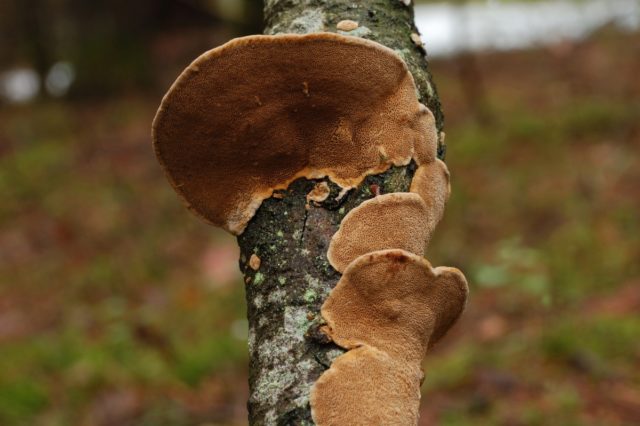
A spongy spore-bearing layer descends down the trunk
Where does the shellinus grow
Widespread throughout the globe. Found on the American continent, Asia and Europe, the British Isles. In Russia, it grows everywhere, especially abundantly in the northern regions, in the Urals, in Karelia and in the Siberian taiga. It grows on dry and living trees, mainly of deciduous species: birch, ash, hawthorn, rowan, lilac, poplar, maple, honeysuckle, acacia, aspen, alder, beech. He especially loves goat willow. Sometimes it can also be found on dead wood or tree stumps.
Affecting a tree, individual small fruiting bodies grow rapidly, occupying new sections of the trunk. They grow in large, closely spaced groups, forming roof-like and tiered outgrowths. They can spread both in height, climbing up to the thinnest branches, and in width, covering the tree with peculiar "collars".
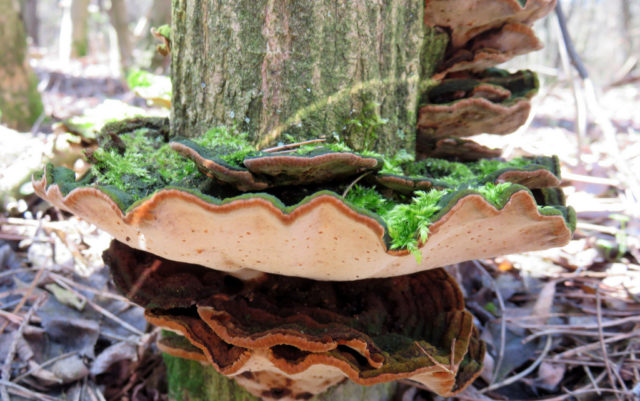
The growths that the shell-shaped fellinus forms look very impressive
Is it possible to eat fellinus shell-shaped
This type of tinder fungus is classified as an inedible mushroom due to its woody pulp with low nutritional value.No toxic and poisonous substances were found in its composition.
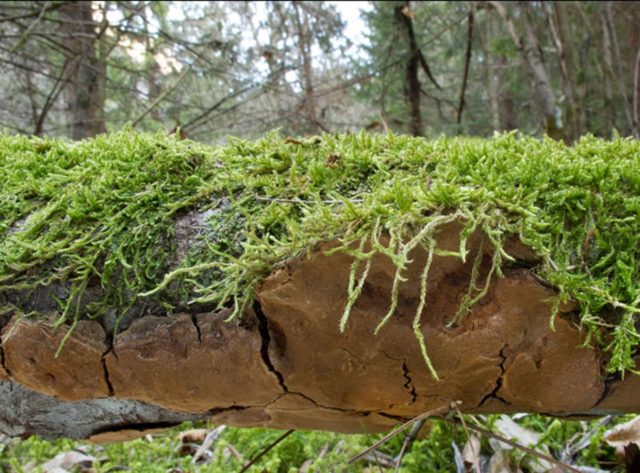
The fungus often coexists with tree mosses, which frame the fruiting bodies with a fancy fringe.
Conclusion
Shellinus is a parasitic tree fungus that infects living deciduous trees. Causes dangerous diseases, often leading to the death of plants. It settles in cracks, chips, damaged and exfoliated areas of the bark. Prefers soft willow wood. Found everywhere in temperate and northern climates, it is a cosmopolitan mushroom. Inedible, contains no toxic substances. In Latvia, the Netherlands and France, the shellinus is included in the lists of endangered species of mushrooms.

